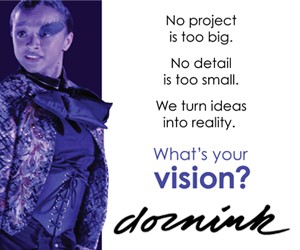
The Covid-19 pandemic caused major challenges for everyone. In what ways did you continue working with students during the pandemic?
In person, I do a thirty- or forty-five- minute workout with my students that’s pretty intense. First, I made video tapes of that and sold them to schools I was working with because they all wanted their kids to have something to do. They were kind enough to buy them. I went to different settings here on our property—the back porch, the solarium, the south lawn. I never had to do any choreography by Zoom. A group in Iowa got permission to be outside, so I drove there. I also drove to Virginia where we worked on a tennis court. Findlay High School was able to work outside at first, then inside, but had to stay within the six-foot squares on the floor. It was all very bizarre, but they all did it, and everyone kept going.
That’s great that you didn’t have to teach on Zoom! At my dance studio we taught classes via Zoom to finish out the 2019-2020 school year. Some of the kids were dancing in their garage, or den, or in a tiny space in their bedroom.
I did teach the Findlay High School spring 2020 auditions on Zoom. Then the director came down and we watched the video of each of them doing it in their homes. I didn’t like that because I don’t ever know the backstory of students, and I like that I don’t. To me they are all on the same field and we are all playing the same game, on the same page. It was really rough to teach via Zoom and felt a bit like an invasion of privacy. I did not like it either, but we did what we had to do at the time to finish the school year.
As we learned in Part 1, your process involves showing up and creating in the moment. You arrive, get the music, and set the dance. Obviously, there are dance captains. What else happens to assist the students after you have set choreography?
They always record what we’ve done. The dance captains will have it, take it, and clean it up. Some of the directors are very good at cleaning the dances as well.
One of my questions was how you keep your work fresh, but it just comes naturally to you, and you read about dance, study other choreographers and watch musicals. Are there any Astaire-types now that inspire you?
Susan Stroman, as far as a New York choreographer, is definitely in that older style look. She’s getting ready to do another show. Also, I’m very interested in seeing the revival of Some Like it Hot because I’ve heard they are doing it in old style musical theater, and that’s what I live for. Some of these more recent shows are sad and depressing stories. We’ve had it rough enough; I don’t need to go to the theater to get roughed up by a sad musical. I want to see big production numbers, song and dance.
That’s what makes it all unique—you like the classic Broadway style and others may resonate with the sad musical. It is interesting to consider how musicals have changed over time, especially starting when musicals were made into movies until now. They don’t really make big movie musicals anymore, do they?
Maybe it’s just too expensive now. I have a friend who was part of the revival of 42nd Street, and he was concerned that it may be the end of that kind of show because it was so expensive. So many people in the cast, so many scene changes and sets, backstage people, technical crew, etc. for those humongous shows. I do love those kinds of shows, big and splashy, over the top.
Is there anything else you would like to share with our readers? Perhaps some advice for aspiring show choir choreographers?
I’d be happy if this interview inspired anybody. I told the director at Findlay I didn’t know why anyone wanted to talk to me. I’m minutes from retiring and I’ve done this since I was nineteen. He said, “That’s a story.”
Your experience and your story I’m sure will resonate with somebody out there, an up-and-coming choreographer or someone for whom it just comes naturally but is being told to major in business rather than musical theater.
How I’ve lived my career—it’s like a library book. Once I’ve checked it back in and walked out the door, I leave it and say, “Good luck.” I was working with a pop singer in New York a few years back, and she always referred to me as Mary Poppins. When it was time to go, I’d pop my umbrella and leave. That’s who I am.
What’s next for Andy Haines?
I do interior choreography on the side, where I tell people where their stuff should go in their homes. I can just walk in and do it. Move a chair, angle that side table. Just give me ten minutes, and I’ll have it fixed. That will be my retirement gig.











